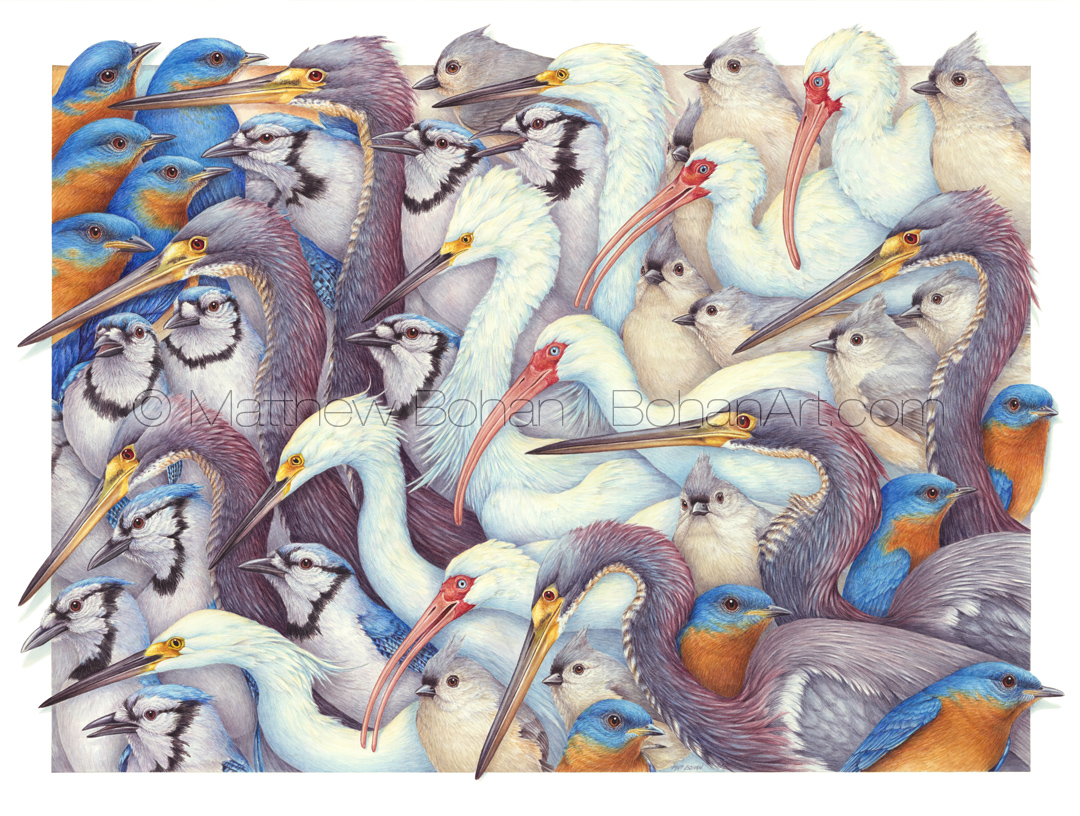
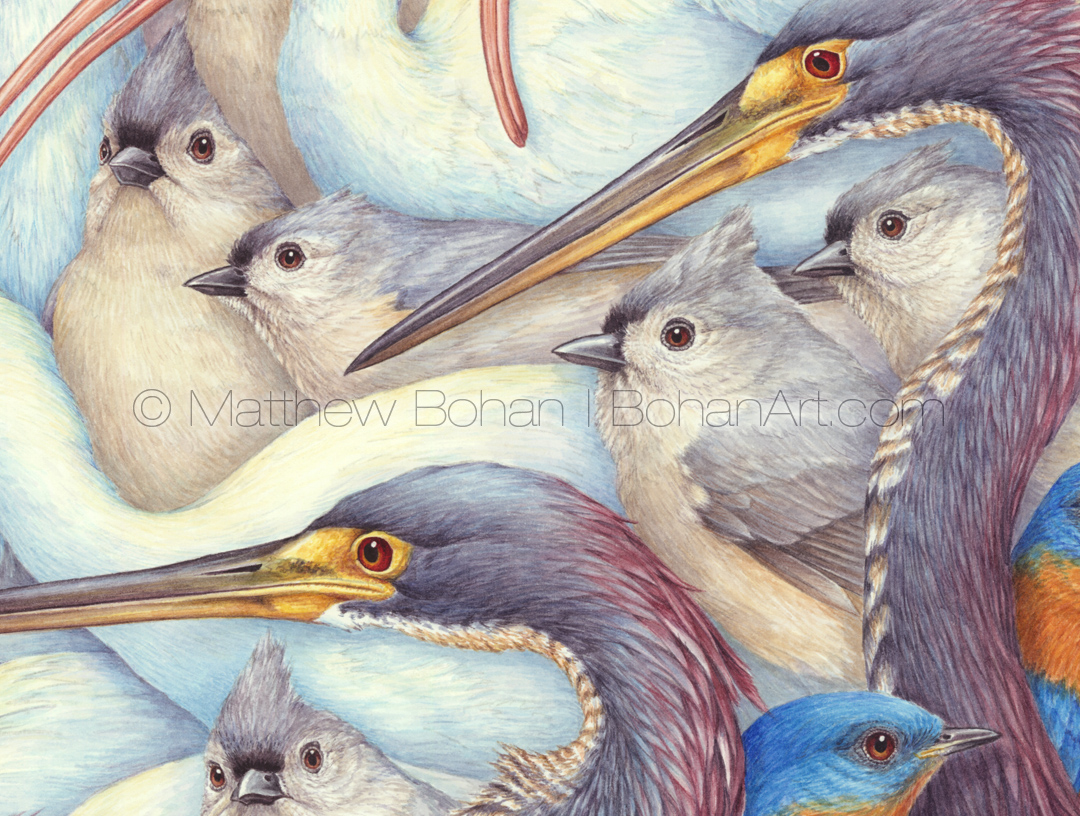
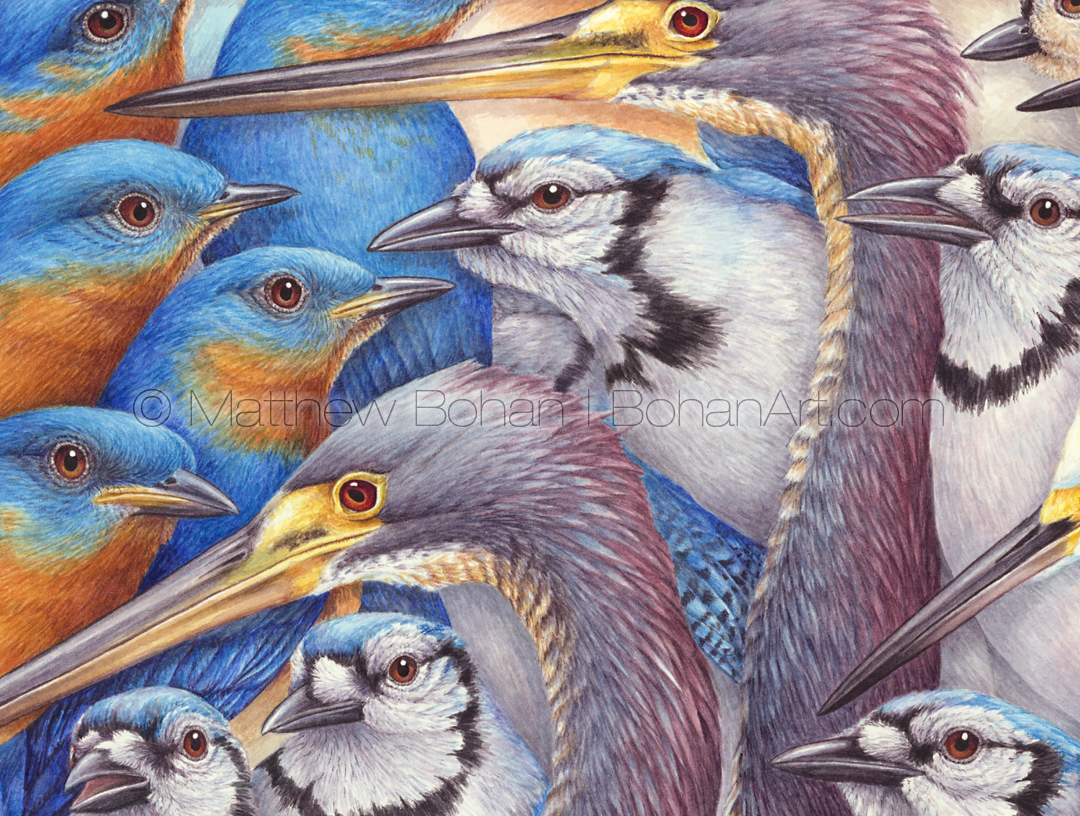
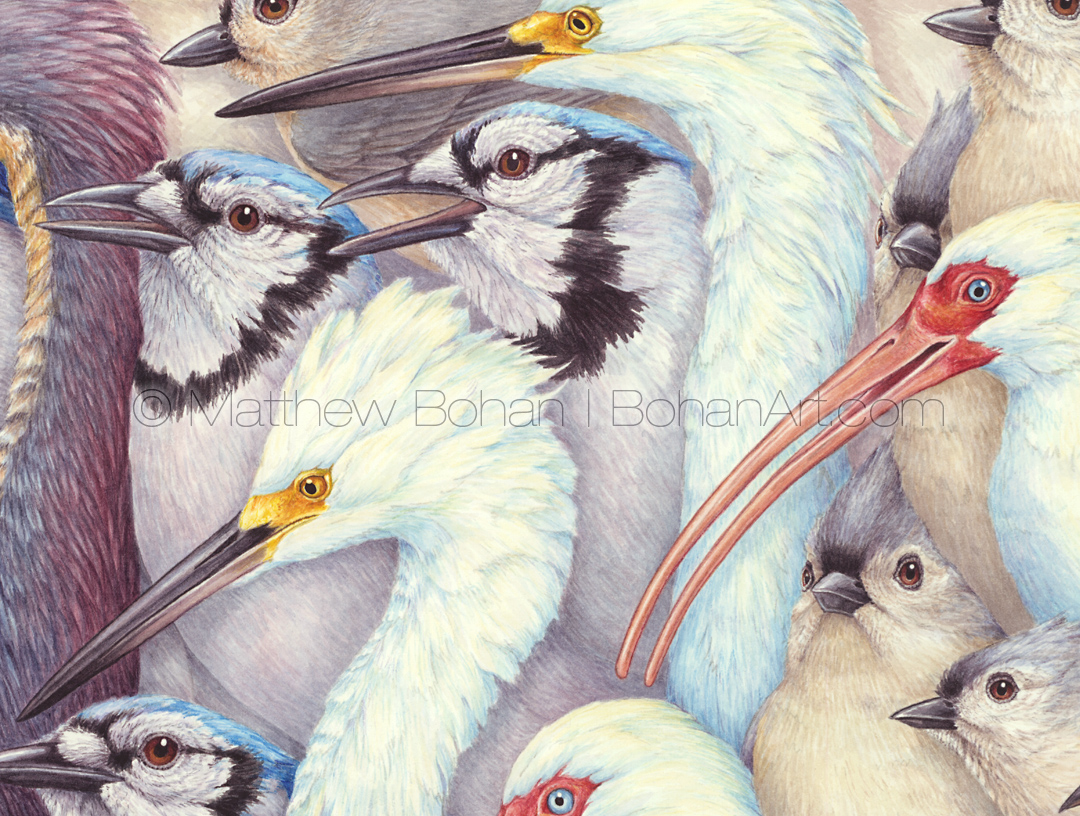
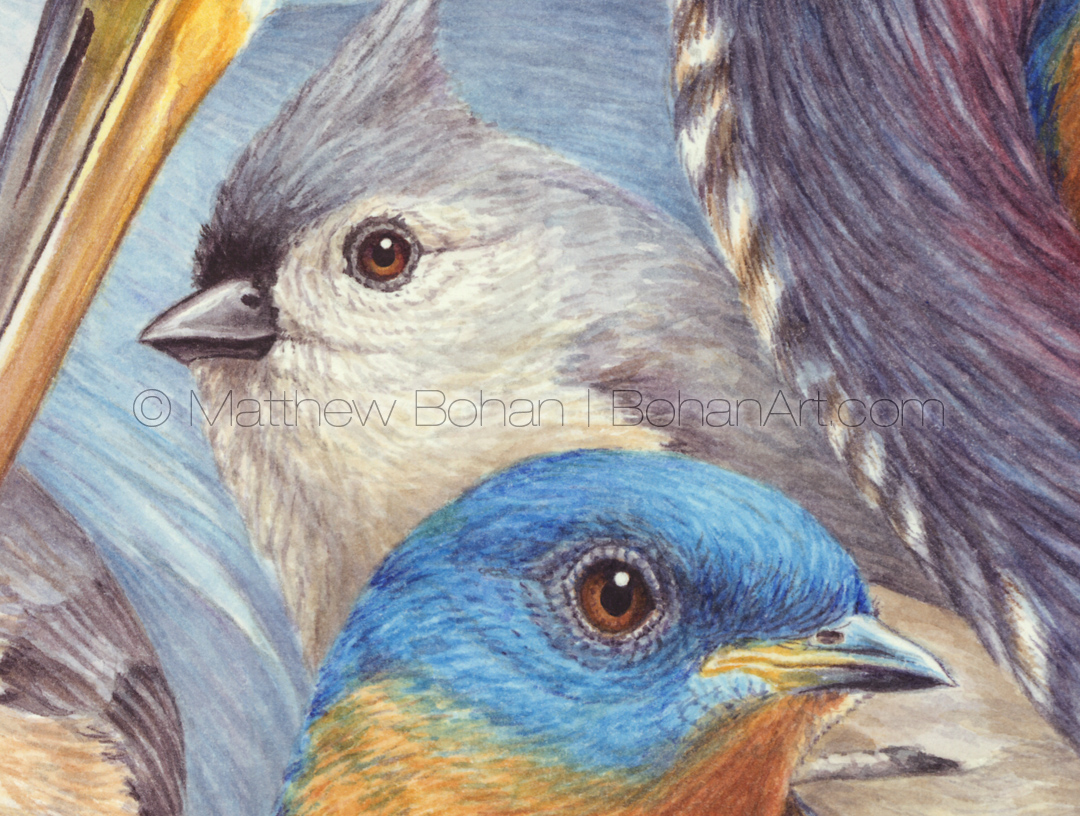
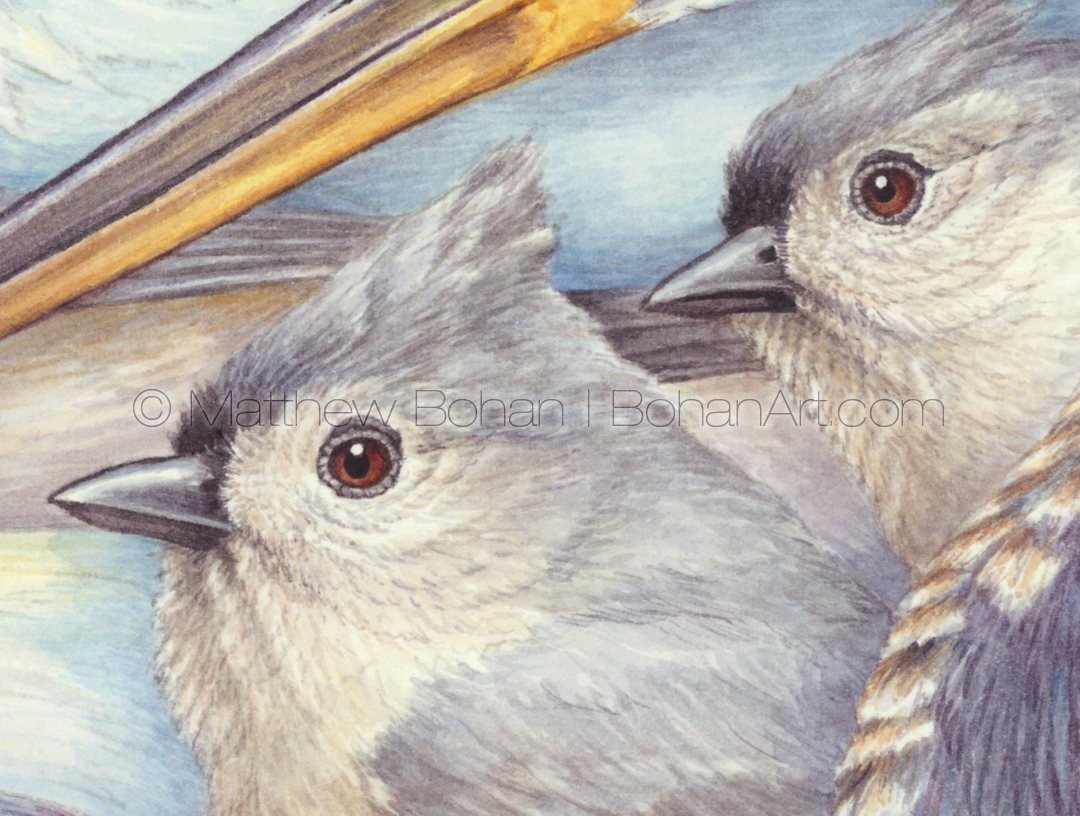
After taking a break from doing these incredibly complex paintings for about 20 years, I did two back-to-back. Maybe that wasn’t the best idea, as this one took just shy of 100 hours! I could’ve completed about seven of my typical paintings in that same amount of time. Like my recent Flying Colors painting, this was 18×24 inches of solid, exhaustive detail. I have a lot of other ideas for similar paintings bubbling around, but I should probably invest some time in smaller, more sellable items for a while.
As much fun as I had coming up with the idea and executing it, I was relieved to have it finished. Nearing completion of a painting with a colossal time commitment like this, I’m always afraid something will happen to it. Watercolor is a fussy medium and has a delicate surface. We had an unusual threat pop up when I was finishing this painting.
Fall here in central Michigan equates to a continual home invasion by Box Elder Bugs, Brown Marmorated Stink Bugs and Lady Bugs looking for a warm place to spend the winter. The Stink Bugs in particular have a way of sneaking into every crack and crevasse around the house. I’ve found them squeezed into my violin and mandolin cases, crammed into a latch of a bike rack and even sandwiched between the glass and LED clock of our oven. Having seen a number in my office/studio space, I was sure they would wedge their way under the protective covering and onto my painting, managing to leave a hideous stain before or after getting accidentally squished.
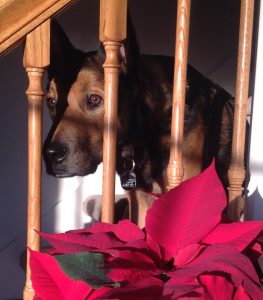 Our lovable but neurotic dog is afraid of these insect trespassers and alerts us to their presence whenever one has the audacity to come within his visual range. He seems certain that they are going to cause the downfall of the civilized world… or at least what passes for civilized in our house. Unfortunately, this is only one of many canine phobias that he suffers from. In addition to being afraid of the dark, the things that strike terror in his doggie heart include hummingbirds, inflatable lawn ornaments, nativity scenes, manhole covers, sidewalk grates, deer, any object left on the back porch, an octogenarian neighbor with a walker and all dogs over 70 pounds. This might lead you to believe that he is a 15-pound, ankle-biter, “foo-foo” dog, but alas, he is a strapping 70-pound German Shepherd/ Norwegian Elkhound mix. I’d say that should be more than a match for even the most muscular and sociopathic ladybug.
Our lovable but neurotic dog is afraid of these insect trespassers and alerts us to their presence whenever one has the audacity to come within his visual range. He seems certain that they are going to cause the downfall of the civilized world… or at least what passes for civilized in our house. Unfortunately, this is only one of many canine phobias that he suffers from. In addition to being afraid of the dark, the things that strike terror in his doggie heart include hummingbirds, inflatable lawn ornaments, nativity scenes, manhole covers, sidewalk grates, deer, any object left on the back porch, an octogenarian neighbor with a walker and all dogs over 70 pounds. This might lead you to believe that he is a 15-pound, ankle-biter, “foo-foo” dog, but alas, he is a strapping 70-pound German Shepherd/ Norwegian Elkhound mix. I’d say that should be more than a match for even the most muscular and sociopathic ladybug.
Now for the artsy talk that I typically avoid so as not to sound like some of the folks who drove me nuts in art school. Generally there was an inverse relationship between the amount of explanation about a piece and the quality of the artwork itself. Anyhow, here it is.
I’m a real fan of the mannerist painter Giuseppe Arcimboldo. I first saw his artwork gracing the cover of the album Masque by Kansas. It features a painting from 1566 called Water. The image is of an almost hypnotizing human portrait that emerges from a still life painted entirely using crabs, fish, shrimp, mollusks and other sea life. I was fascinated by how he used still life objects to create abstracted, sometimes grotesque portraits. They were realistically painted, but transformed into something else entirely when you stood back a bit. In a way that was what I was hoping to accomplish with this: to create an abstraction with color, shapes and movement of textures by using realistic representations of birds.
There were a variety of things I wanted to “play with” in this work. I find it interesting to investigate the movement in repeated patterns and shapes. I thought it would be fun to play with the colors of birds that we think of as having the same basic colors. I did this by stripping back the palette a bit through my choice of birds for the painting. Birds were picked on a few criteria: first, they had to be the right colors. I wanted birds with similar but slightly different colors and textures to juxtapose. Second, I needed to have good photos of my own to work from so I wouldn’t be relying on any outside references. Third, I wanted to compose the painting in a way that would show off the varieties of colors and textures that are very similar on the surface while rendering them so you could also detect just how different the tones actually are, so I chose birds suitable for this scheme.
Looking at the painting, you can see how the whites of the egrets are very pure white, smooth and streaky, while the ibis’ plumage is more ruffled, the Blue Jays have more purple-pink overtones and the Tufted Titmice have warm hues. Similarly, the overall blue tones have great variety. To offset the predominance of blues and whites, I included repeating warm accent colors, with the reds beaks and faces of the ibis, oranges of the bluebirds, lores of the egrets and red eyes of the herons popping up sparingly throughout the piece.
For those counting, there are 45 birds in the painting:
- White Ibis (4)
- Snowy Egret (4)
- Tricolor Heron (6)
- Blue Jay (10)
- Tufted Titmouse (11)
- Eastern Bluebird (10)

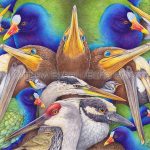
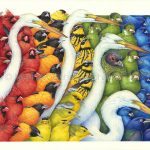
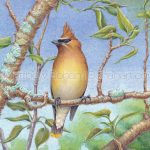
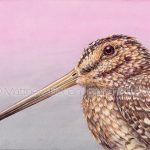
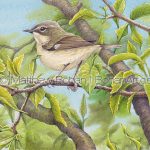
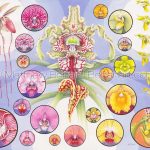
Leave a Reply